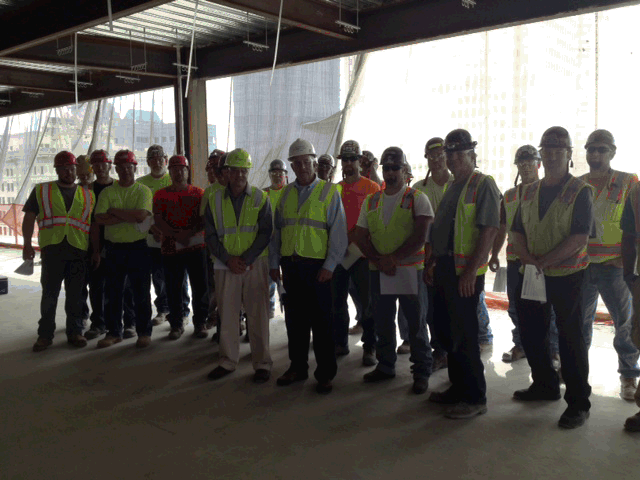OHS from a Strategic Perspective Series - Lesson 5
The key to understanding the importance of health and safety in your workplace is to comprehend the significance it plays in your overall cost analysis. STACS Inc. has developed this week long series guided towards assisting you in quantifying the costs of workplace injuries and comparing it to the costs of developing a successful health and safety program.
Lesson 5: The Cost of Workplace Injuries continued…
Brought to you from: Occupational Health and Safety in Ontario by Nora Rock
Measuring Results:
“It can be very difficult to measure the results of occupational health and safety initiatives. The most readily available tool for measuring safety are the company’s NEER, CAD-7, or MAP statements. These incentives programs adjust premiums based on the company’s safety performance relative to the performance of other similar businesses. The WSIB reports that top safety performers can out-perform the bottom 25 percent (quartile) of businesses by 70 to 90 percent. Receiving a premium reduction under an incentive program is a sure sign that the company’s efforts are effectively reducing workplace injuries and illnesses.”
“Another way in which companies can measure results is by keeping accurate records of injuries and incidents of work-related illness. Many of these incidents need to be reported to the WSIB, and so records will be generated in the course of the reporting process. However, it can be useful for a company to supplement the basic compliance-level record keeping with internal analysis that looks deeper-into the root causes of the accident. By taking the time to think about the causes of an accident (either in the course of a full internal investigation or more informally, for less serious incidents) employers will be better equipped to avoid future problems. From a cost perspective, applying the analysis developed by the WSIB can assist the employer in building a strong business case for safety improvements.”
“A precise-cost benefit analysis of a specific safety measure is rarely possible. However, there are credible statistics that suggest that spending money to improve safety is a good investment. In its Fall Facts brochure, Canadian fall protection company Innovative Fall Protection cites the US Department of LAbor’s estimate of a cost savings of between $4 and $6 for every $1 invested in good quality health and safety programs (Innovative Fall Protection Inc., 2003).”
“In a 2001 seminar, Ted Pattenden, former CEO of National Rubber Industries (NRI), reported measurable results following an effort to create a culture of safety at his company:
Safety is a positive cultural element that leads to other business improvements. In 1990 NRI had 3800 lost days, in 1999, 16 lost days. In 1990 NRI was losing money, In 1999 NRI had top quartile profitability. A primary emphasis was charging the safety culture
Management that cannot manage safety cannot manage other functions. Symptoms may include:
Poor housekeeping
Many unscheduled equipment breakdowns
Lower employee morale and high turnover
High cost- failure to meet profit targets
Whether or not your organization chooses to conduct a cost-benefit analysis of safety promotion expenditures, statistics make it clear that injury rates (and related accident costs) can be reduced by appropriate health and safety programs and through efforts to create a ‘culture of safety’ within the workplace. You may even believe that you have a moral or ethical duty to create such a culture. Discharging that duty, while difficult in the short terms, may well set your company apart from the pack, establishing it as a safety leader.”
Safety Leadership:
“the use of the term ‘accidents’ to describe workplace events that lead to illness or injury is not ideal, because it can leave the impression that these events are unpredictable, random, and uncontrollable. Often this is not the case. While not every circumstance or combination of circumstances that can arise in a workplace can be foreseen, the fact that it is indeed possible to reduce accident rates by taking specific action has been proven over and over again.
If accidents were truly random, the ranking of companies based on safety performance would vary widely from year to year. In fact, it does not. There are clear ‘safety leaders’ in most industries: employers that enjoy consistently better-than-average records with respect to worker safety.”
“When the safety performance of safety leaders is compared with that of ‘safety stragglers’, the difference in safety performance is not slight- as one would expect it to be iff accidents were random. Instead, it is fairly dramatic. The authors of Business Results through Health and Safety report that, according to the WSIB , compensation and other accident-related costs for safety leaders (those at the top of performance rankings) tend to be 70 to 90 percent lower than those of the companies performing in the bottom quartile. Safety is not a matter of luck, but rather a result that flows from identifiable actions.”
“Good workplace injury and illness statistics may define a company as a safety leader, but they do not provide sufficient information for companies looking for an example to follow. What, specifically, are the factors that predict good safety performance?
One factor is a conscious choice, on the part of the company, to change its perception of safety. Instead of viewing workplace health and safety as a compliance issue-a ‘must-do’ necessary evil- safety leaders view safety as an organizational core value, committing to it independent of the regulatory context.
Compliance with occupational health and safety laws is a minimum legal requirement. Maintaining minimum compliance will protect a business from fines and from excessive interference by regulatory bodies, but it will be insufficient to pay the dividends- in terms of public image, productivity and good employee relations- that flow from being a safety leader. Safety leaders approach injury and illness prevention not as a compliance obligation (something that must be done to stay out of trouble) but rather as a goal worth pursuing, for the sake of workers and their families and for the impact safe operation can have on the business’s performance.”













